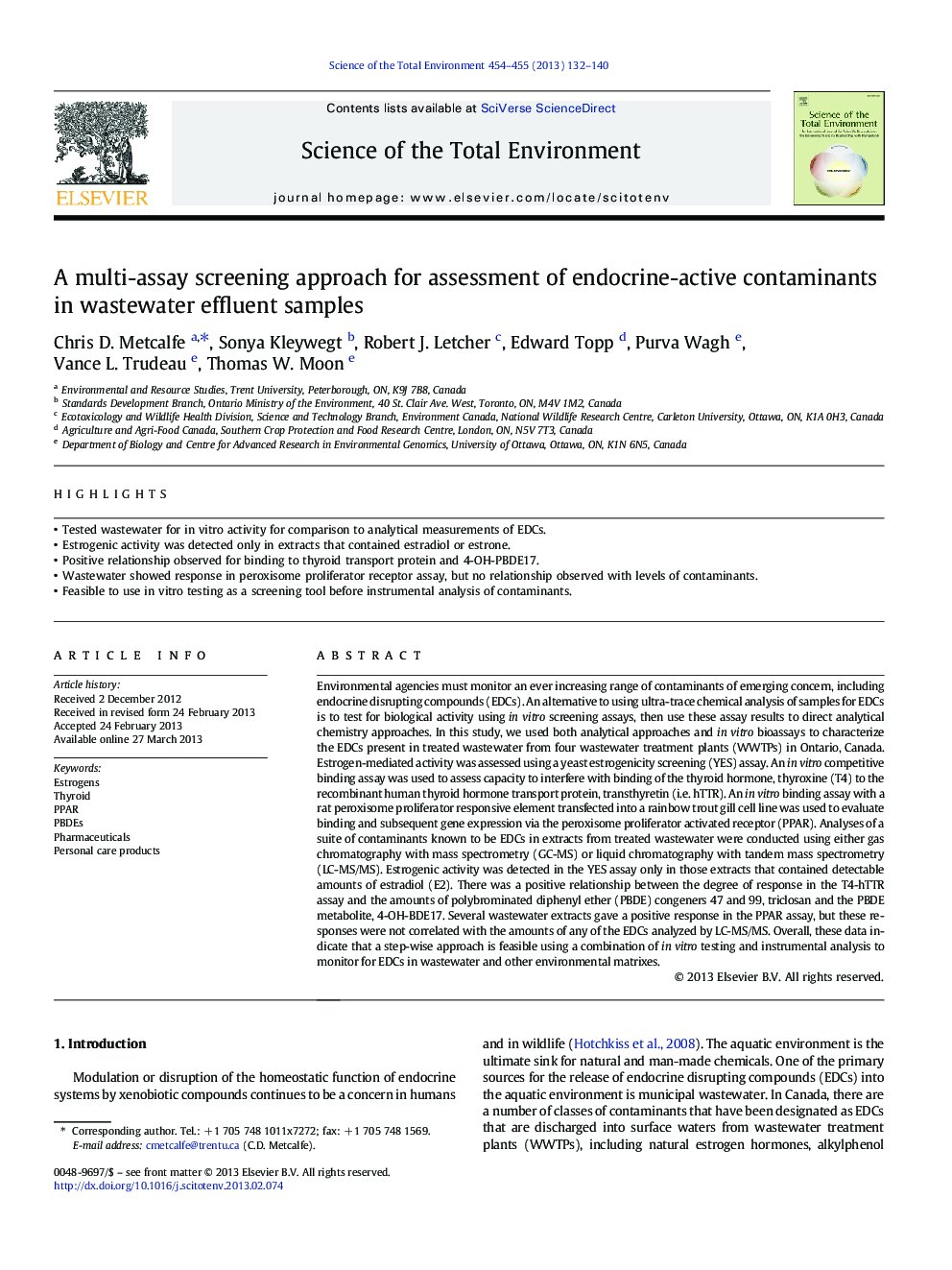| کد مقاله | کد نشریه | سال انتشار | مقاله انگلیسی | نسخه تمام متن |
|---|---|---|---|---|
| 6332958 | 1619802 | 2013 | 9 صفحه PDF | دانلود رایگان |
- Tested wastewater for in vitro activity for comparison to analytical measurements of EDCs.
- Estrogenic activity was detected only in extracts that contained estradiol or estrone.
- Positive relationship observed for binding to thyroid transport protein and 4-OH-PBDE17.
- Wastewater showed response in peroxisome proliferator receptor assay, but no relationship observed with levels of contaminants.
- Feasible to use in vitro testing as a screening tool before instrumental analysis of contaminants.
Environmental agencies must monitor an ever increasing range of contaminants of emerging concern, including endocrine disrupting compounds (EDCs). An alternative to using ultra-trace chemical analysis of samples for EDCs is to test for biological activity using in vitro screening assays, then use these assay results to direct analytical chemistry approaches. In this study, we used both analytical approaches and in vitro bioassays to characterize the EDCs present in treated wastewater from four wastewater treatment plants (WWTPs) in Ontario, Canada. Estrogen-mediated activity was assessed using a yeast estrogenicity screening (YES) assay. An in vitro competitive binding assay was used to assess capacity to interfere with binding of the thyroid hormone, thyroxine (T4) to the recombinant human thyroid hormone transport protein, transthyretin (i.e. hTTR). An in vitro binding assay with a rat peroxisome proliferator responsive element transfected into a rainbow trout gill cell line was used to evaluate binding and subsequent gene expression via the peroxisome proliferator activated receptor (PPAR). Analyses of a suite of contaminants known to be EDCs in extracts from treated wastewater were conducted using either gas chromatography with mass spectrometry (GC-MS) or liquid chromatography with tandem mass spectrometry (LC-MS/MS). Estrogenic activity was detected in the YES assay only in those extracts that contained detectable amounts of estradiol (E2). There was a positive relationship between the degree of response in the T4-hTTR assay and the amounts of polybrominated diphenyl ether (PBDE) congeners 47 and 99, triclosan and the PBDE metabolite, 4-OH-BDE17. Several wastewater extracts gave a positive response in the PPAR assay, but these responses were not correlated with the amounts of any of the EDCs analyzed by LC-MS/MS. Overall, these data indicate that a step-wise approach is feasible using a combination of in vitro testing and instrumental analysis to monitor for EDCs in wastewater and other environmental matrixes.
Journal: Science of The Total Environment - Volumes 454â455, 1 June 2013, Pages 132-140
